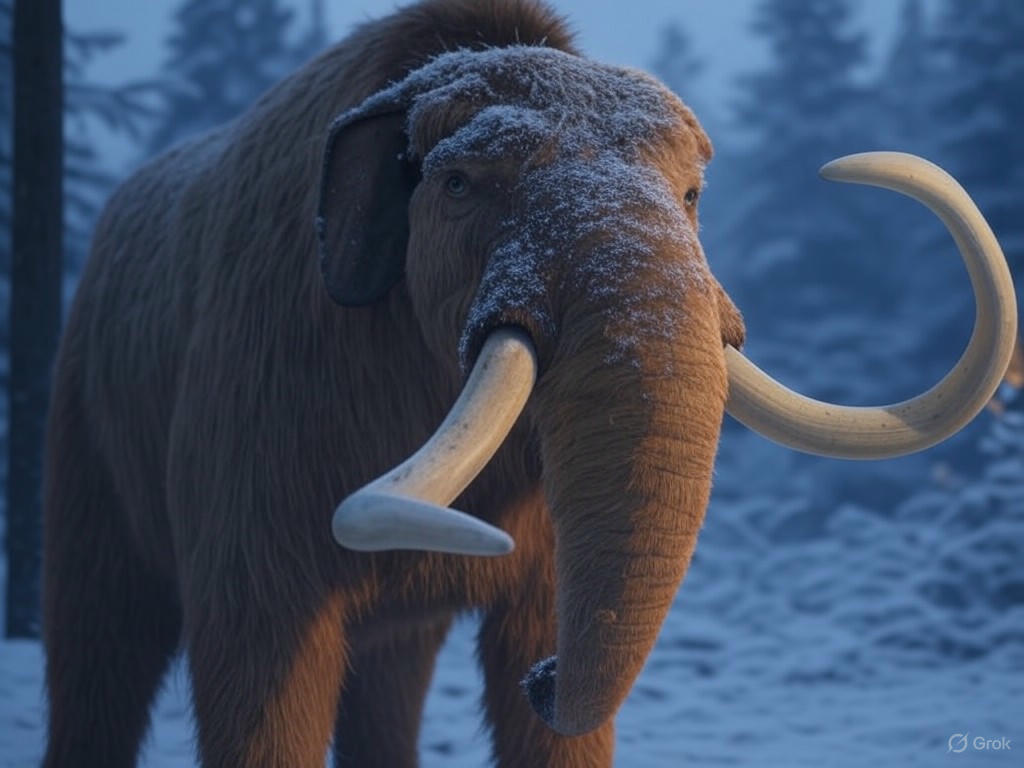From Mammoths to Mice: A Strange Leap in Genetic Revival
In the realm of genetic science, ambition often leads to unexpected discoveries. Scientists, driven by the dream of bringing the long-extinct woolly mammoth back to life, have stumbled upon a peculiar milestone. Instead of a towering, shaggy giant roaming the tundra, they’ve introduced the world to a tiny, fur-covered oddity: the woolly mouse. This small creature, a hybrid of modern mice and ancient genetic material, marks a surprising detour on the road to de-extinction. While the ultimate goal remains the resurrection of the mammoth, this quirky achievement offers a glimpse into the unpredictable nature of tampering with life’s building blocks.
The journey to revive the woolly mammoth has been fueled by advances in CRISPR gene-editing technology and the recovery of well-preserved DNA from permafrost-encased remains. Researchers have long envisioned reintroducing these prehistoric giants to Arctic ecosystems, believing they could help combat climate change by restoring grasslands that trap carbon. But the path is fraught with challenges, from piecing together fragmented genetic code to finding suitable surrogate species for gestation. In their latest experiments, scientists attempted to integrate mammoth DNA traits—such as dense fur and cold resistance—into living organisms. The result was not a mammoth but a mouse, genetically altered to sport a thick, woolly coat reminiscent of its ancient cousin. This pint-sized creation, while far from the intended target, showcases the precision and potential of modern genetics. It also raises questions about the ethical boundaries of such experiments and the unintended consequences of playing with nature’s blueprint.
Beyond the novelty of a furry mouse, this development serves as a stepping stone. Scientists argue that each small success refines their techniques, bringing them closer to their ultimate vision. The woolly mouse, though an anomaly, demonstrates that ancient traits can be expressed in living creatures, providing valuable data on gene functionality and compatibility. However, critics caution against the hubris of de-extinction, warning that reviving extinct species—or creating hybrids—could disrupt modern ecosystems or divert resources from conserving endangered animals. Public fascination with the woolly mouse also underscores a broader curiosity about whether humanity should wield such power over life itself. As researchers press forward, they must balance scientific curiosity with moral responsibility, ensuring that their breakthroughs don’t unleash more problems than solutions.
The woolly mouse may be a footnote in the grand saga of resurrecting the mammoth, but it symbolizes the unpredictable twists of scientific exploration. For now, this tiny creature scampers through lab environments, a living testament to human ingenuity and the mysteries of ancient DNA. Whether it’s a harbinger of a future where mammoths once again tread the Earth or merely a curious detour, only time will tell. Until then, the world watches as science blurs the line between past and present, one unexpected critter at a time.


